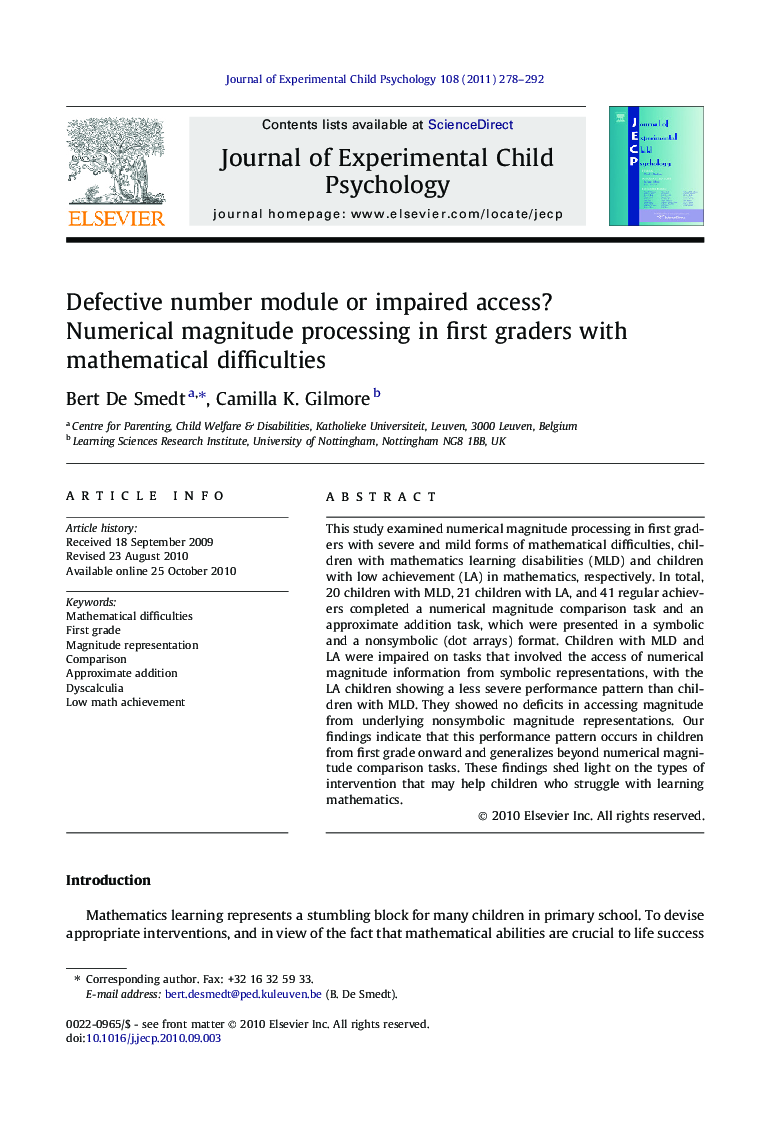| Article ID | Journal | Published Year | Pages | File Type |
|---|---|---|---|---|
| 918392 | Journal of Experimental Child Psychology | 2011 | 15 Pages |
This study examined numerical magnitude processing in first graders with severe and mild forms of mathematical difficulties, children with mathematics learning disabilities (MLD) and children with low achievement (LA) in mathematics, respectively. In total, 20 children with MLD, 21 children with LA, and 41 regular achievers completed a numerical magnitude comparison task and an approximate addition task, which were presented in a symbolic and a nonsymbolic (dot arrays) format. Children with MLD and LA were impaired on tasks that involved the access of numerical magnitude information from symbolic representations, with the LA children showing a less severe performance pattern than children with MLD. They showed no deficits in accessing magnitude from underlying nonsymbolic magnitude representations. Our findings indicate that this performance pattern occurs in children from first grade onward and generalizes beyond numerical magnitude comparison tasks. These findings shed light on the types of intervention that may help children who struggle with learning mathematics.
